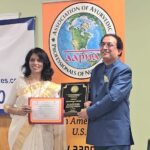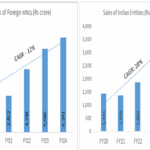Alcohol and tobacco consumption and unhealthy lifestyles form the root cause
New Delhi, January 30, 2019: According to recent reports by the WHO, non-communicable diseases (NCDs) continue to be the top killers in the South-East Asia Region, claiming 8.5 million lives each year. The categories include cardiovascular and chronic respiratory diseases, as well as diabetes and cancer. These are collectively responsible for over 70% of all deaths worldwide, or 41 million people. These include 15 million people dying prematurely, aged between 30 and 69.
The WHO indicated tobacco use, unhealthy diet, insufficient physical activity and harmful use of alcohol as the modifiable risk factors for these diseases. The NCDs disproportionately affect the poor, impoverish families, and place a growing burden on health care systems. Containing the NCDs has been listed by the WHO as its health goal for this year along with reducing mortality related to air pollution and climate change, global influenza pandemic etc.
Speaking about this, Padma Shri Awardee, Dr KK Aggarwal, President, HCFI, said, “NCDs are not only a health problem but also a development challenge in a country like India. Apart from forcing people into poverty, they also have a large impact on undercutting productivity. While non-communicable diseases have traditionally been thought of as affecting only the urban population, research indicates that there has been an increase in their prevalence in the tribal areas as well. This is largely due to an early epidemiologic transition. There is a lack of access to affordable and quality public health systems in these areas, which further exacerbates the situation. The need of the hour, therefore, is to strengthen the public health system in these areas and integrate the tribal medical system with modern systems of medicine for providing best possible care.”
According to the National Health Systems Resource Centre, there is an overall deficit of 20% sub-centres, 30% PHCs and 22% CHCs in ten major states with tribal populations.
Adding further, Dr Aggarwal, who is also the Group Editor-in-Chief of IJCP, said, “The need of the hour is an urgently integrated action on health care to make it universally accessible and affordable at the same time. This will not only help address the health needs but also have a positive effect on poverty and growth levels. A strategy that makes citizens more competitive and act as an asset to the country’s growth is what is required at this juncture.”
Some tips from HCFI
- Develop healthy habits including eating, sleeping, and exercising right.
- Do not overdo anything. From drinking to using the cell phone, everything must be in moderation.
- Follow ancient wisdom. Do Yoga and Meditation for your mental and spiritual wellbeing and maintain equilibrium. Allow your body to heal itself.
- Get periodic check-ups done. Early detection of most health problems can help in correcting lifestyles to slow the degeneration process and lead a longer and healthier life.
- Both active and passive smoking are harmful for the body.
- Manage your blood cholesterol, blood pressure as well as blood sugar.
- Maintain optimum body weight. Limit your salt intake.







